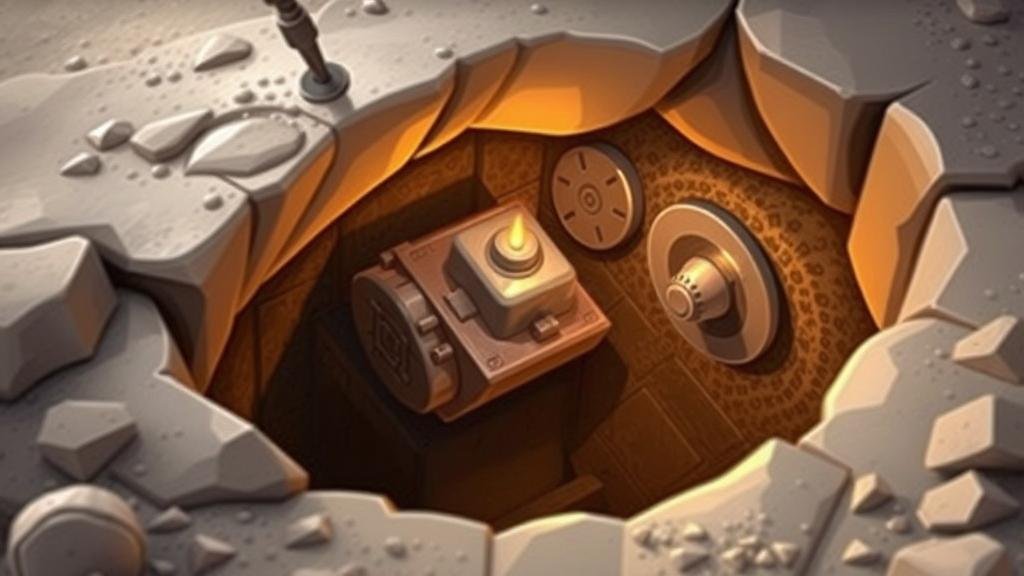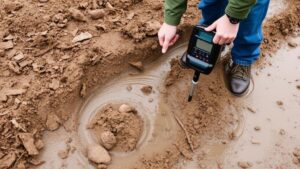Spotting Traps Triggered by Heat or Pressure in Buried Vaults
Introduction
The detection of traps triggered by heat or pressure in buried vaults is a crucial concern in various fields, including archaeology, construction, and forensic investigations. These traps can be engineered obstacles designed to catch intruders or protect valuable resources. Understanding how to spot these traps requires both theoretical knowledge and practical skills, thus necessitating a comprehensive exploration of their characteristics and detection methods.
Types of Heat and Pressure Traps
Heat-Trapping Mechanisms
Heat traps are often designed to activate a trigger when a certain temperature threshold is reached. Such traps might employ sensitive components like thermocouples or thermistors. For example, one notable case involved a historic tomb where a heat-responsive trap was designed to release toxic gases when an intruders body heat exceeded the normal range.
Pressure-Activated Traps
Pressure traps, on the other hand, utilize changes in physical pressure to activate mechanisms. This might include pressure-sensitive plates or hydraulic systems that trigger when an individuals weight exceeds a specific limit. An example can be drawn from urban archaeology, where an excavation revealed a pressure trap activated by footfall, meant to safeguard buried treasures.
Detection Techniques
Visual Inspections
A comprehensive visual inspection is the first step in identifying potential traps. Look for unusual ground disturbances, compacted soil areas, or odd surface configurations. Also, the presence of heat-sensing cables or ventilation ducts can be indicative of heat traps. Employing infrared cameras can enhance this visual inspection by revealing temperature variations that might not be detectable to the naked eye.
Pressure Sensitivity Assessment
To assess for pressure traps, investigators often utilize portable load gauges or pressure plates. These tools can simulate footfall and determine whether any mechanisms respond to applied pressure before an individual steps onto suspicious surfaces. The deployment of ground-penetrating radar (GPR) is also essential in this phase, as it can identify anomalies in subsurface structures, indicating potential trap sources.
Case Studies on Trap Detection
The Tomb of the Unseen
A prominent investigation took place at a remote archaeological site known as the Tomb of the Unseen. Utilizing a combination of GPR and infrared thermography, researchers successfully detected multiple heat traps designed to release concealed projectiles when ground temperature fluctuations were noted. The careful mapping of these traps allowed for a safe excavation process.
Urban Excavation Project
Another example is an urban excavation project in a historic city where a pressure-activated trap was identified beneath a public square. The usage of load gauges confirmed the presence of a pressure plate, while historical records indicated its purpose as a defensive mechanism. Recognizing these traps during the excavations not only ensured the safety of workers but also preserved the historical integrity of the site.
Challenges and Considerations
Potential Pitfalls in Detection
Despite advancements in detection technologies, challenges remain. False alarms triggered by environmental conditions or benign disturbances can complicate investigations. It is essential for practitioners to remain skeptical and verify findings through multiple methods to prevent unnecessary risks and misinterpretations.
Legal and Ethical Concerns
The detection and dismantling of traps must also align with local laws and ethical standards, especially in archaeological contexts. Professionals should be mindful of legal ramifications when altering or interfering with historical sites. Collaborating with historians and legal experts is advisable to ensure compliance and respect for the cultural significance of discovered traps.
Actionable Takeaways
- Use a combination of visual inspections, infrared thermography, and GPR to identify heat or pressure traps effectively.
- Apply pressure sensitivity assessments with load gauges to determine potential pressure-activated traps.
- Study relevant case histories to inform detection strategies and understand the best practices in trap identification.
- Maintain a multidisciplinary approach, collaborating with legal and ethical experts to ensure responsible practices in trap evaluation.



